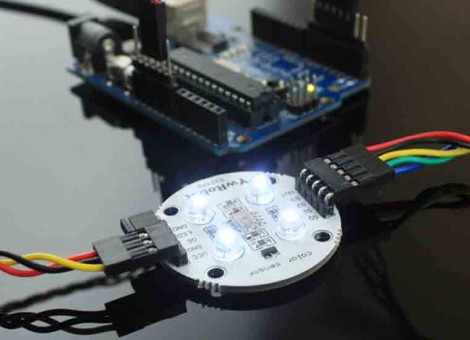
ElecFreaks is selling a new color sensing module based on the TSC230 sensor. They’ve posted a demonstration using an Arduino that shows off what this sensor is capable of. The module includes four white LEDs which give a baseline of light to help normalize readings when reflected off of differently colored surfaces. The white balance of the sensor needs to calibrated in software in order to ensure accurate readings, but once that’s done you’ll be cable to pull RGB values off of whatever you put in front of the sensor.
What a nice addition to sorting machines like this LEGO sorter. Of course you can do something like this yourself using an RGB LED as a detector, but the TSC230 is extremely sensitive and should be quite reliable in comparison. They’re selling the module for $15, a price point that’s hard to beat if you need precise color detection in your next project. A colored token reader for your MAME cabinet perhaps?















This device gives impressive value for its price but is not capable of precision color measurement. The spectral sensitivity curves of the photodiode detectors overlap considerably. White LEDs do not provide a black body spectrum. This device is good for crude color detection as well as comparing images made from the same ink sets and paper. With non-similar materials it can produce different readings for materials that appear the same color under sunlight as well as identical readings for materials that appear as different colors under sunlight.
i was wondering if this sensor was capable of matching paint colors like the paint matching /mixing machines you find at paint stores and apparently by your post that is not the case…thanks for the info
There’s not much you can do about the sensors, but you could always replace the LEDs with something with a more even spectrum (like a regular incandescent bulb) if you needed it.
It might be useful for some things, but I don’t think there is any combination of component upgrades that would make this approach terribly accurate…don’t expect to match paint colors or calibrate your monitor with this.
I made a decent colour sensor using an RGB LED as a light source, and a Cds photocell. I use an Arduino, and return a fairly accurate colour reading.
http://www.instructables.com/id/Magical-Chameleon-Lamp/